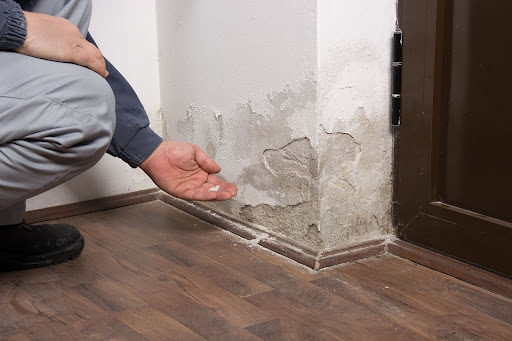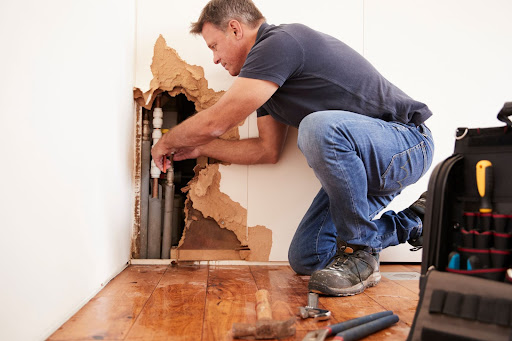Eight Things You Can Do to Prevent Water Damage in Your Home
Water damage can be a homeowner’s worst nightmare, often leading to costly repairs and a lengthy restoration process. Homeowner’s insurance might help cut down on how much it costs and bring you peace of mind.
Another thing that will help is understanding the challenges and stress water damage brings to you and your family. Aside from homeowners insurance and the accompanying claims, preventing water damage before it happens is even better.
Let’s empower you with knowledge for water damage prevention. Here are eight proactive steps to take to safeguard your home:
1. Regular maintenance of plumbing systems
One of the most effective water damage prevention strategies is performing regular maintenance on your home’s plumbing system. This includes checking for leaks, routinely replacing hoses on appliances like washing machines and dishwashers so they don’t burst, and ensuring that pipes are insulated against winter freezes.
Small leaks in your plumbing can quickly escalate into significant water damage if not addressed promptly. Be aware of the different parts of your plumbing system and how each part performs.
2. Proper landscaping and drainage
Your home’s exterior plays a crucial role in water damage prevention. Check that your landscaping slopes away from your foundation to prevent water pooling. If your landscaping doesn’t do this already, look into altering your landscaping.
In addition to checking your landscaping, keep gutters and downspouts clear of debris to ensure proper drainage during heavy rains. Gutters and downspouts direct water away from your home so it doesn’t pool in your foundation or on your roof. Cleaning your gutters and downspouts reduces the risk of water damage from external sources like rain.
3. Install water detection devices
In the age of smart homes, water detection devices have emerged as convenient devices for homeowners. Water detection devices work by sensing moisture and sending an alert to your smartphone or another connected device. This immediate alert helps you to know about water problems before it gets out of hand.
These devices work best when placed where leaks are most likely to occur. These places are usually near water heaters, sump pumps, washing machines, and under sinks.
4. Regular roof inspections and maintenance
The roof is your home’s first line of defense against water damage. Regular inspections and maintenance help prevent leaks and water damage.
\When inspecting your roof, first look for missing or damaged shingles, which are a common issue that often leads to water damage. These gaps leave big openings for water to fall through into the attic or ceiling of your home.
Another critical area to check is the flashing around chimneys, vents, and skylights. Flashing is the material — usually metal — that protects the seams around these roof features from water. Over time, flashing becomes loose or corroded. Corroded or loose flashing creates gaps where water is able to seep through.
In addition to these checks, it’s important to look for signs of sagging or uneven rooflines, as these indicate more serious structural issues. Areas of moss and algae growth may also signal trapped moisture, which deteriorates roofing materials over time.
Regular maintenance also involves professional inspections. A qualified roofing professional can identify potential issues that may not be visible to the untrained eye and will offer solutions to extend the life of your roof.

5. Understand your water main
Knowing where your water main is and how to shut it off is crucial for water damage prevention. In the event of a major leak, quickly turning off the water main can minimize the extent of the water damage. This information is helpful when you plan to be away from home for an extended period.
In addition, make sure that all household members know where the water main is, how to turn it off, and what situations necessitate turning it off.
6. Regularly inspect and seal windows and doors
Windows and doors are common entry points for water. Rain and condensation are the two main sources of water that get through doors and windows. Water will trickle through tiny spaces where there are gaps in the caulking or weatherstripping.
Regularly inspect the seals around windows and doors and reseal them as necessary. Sealant and caulking will deteriorate, crack, or peel away if it is old or damaged. You should also check for any gaps where daylight is visible as you check for damage. Check around windows and doors for signs of rot, as this is another sign of water getting through.
When repairs are needed, use a quality silicone-based caulk. Remember, resealing these areas prevents water damage and enhances your home’s energy efficiency. A well-sealed window or door seals out drafts and increases energy efficiency when it comes to warming or cooling your home.
In addition to windows and doors, inspecting other potential entry points for water is important. This includes the often-overlooked areas where utility pipes or wiring enter your home. Use caulking to seal off these gaps.
Another entry point for water is cracks in your home. Look especially closely at the foundation, siding, or around utility entries. Use appropriate caulking or expandable foam sealant to close any gaps you find, or call a professional to do it for you.
7. Maintain your sump pump
For many homeowners, especially those in areas prone to heavy rainfall or with homes below the water table, a sump pump is a crucial defense against basement flooding and the resulting water damage.
If your home has a sump pump, ensure it’s in good working order, especially before the rainy season. A functioning sump pump is designed to prevent basement flooding and subsequent water damage. Here are some things to look out for with a sump pump:
- Regularly test your sump pump: This can be as simple as pouring a bucket of water into the sump pit. The pump should activate, remove the water, and then turn off automatically. If it doesn’t, it may require maintenance or replacement.
- Regularly clean your sump pit: Debris often accumulates in the sump pit over time. This debris may obstruct the pump’s intake and affect its efficiency.
- Check the discharge line and check valve: The discharge line directs water away from your home, and any blockages or damage can cause water to back up and potentially lead to flooding. The check valve prevents water from flowing back into the sump pit. If it’s not functioning correctly, then flooding is a possibility.
- Get backup power: Sump pumps usually work their hardest during storms. However, storms are the times when loss of power is most likely. To avoid this becoming a problem, have a backup power source for your sump pump in case of a power outage.
8. Regularly inspect and clean your air conditioning units
Air conditioners produce a significant amount of condensation, which, if not properly drained, will lead to water damage. Regular maintenance and cleaning of your AC unit helps prevent these issues.
Here is some basic A/C maintenance you can do at home to avoid water damage.
- Inspect and clean the air filters: Dirty or clogged air filters restrict airflow, causing the unit to freeze and then defrost. This freezing and defrosting leads to excess water. Regularly replacing air filters helps avoid this issue.
- Check the condensate drain line: This is the primary path for condensation to exit the unit. Clean out any algae, debris, or mold to prevent the pipe from getting backed up. To keep the line clear, regularly flush it with water and vinegar.
- Check the condensate drain: This is a pan that catches condensation from the AC unit. If it is cracked or broken, water can leak out. Replace the condensate drain if needed.
If none of the above is helping, consider calling a professional to inspect your unit or check for water damage.

Let Hudson Douglas Public Adjusters Help You With Water Damage Claims
At Hudson Douglas Public Adjusters, we advocate for your interests, ensuring that your insurance claim is handled fairly and efficiently. Our team harnesses over 50 years of experience in construction and disaster restoration, along with the industry’s leading tools and software, to provide the best outcome for our clients.
Remember, preventing water damage is always preferable to dealing with its aftermath. Following these steps will significantly reduce your home’s water damage risk. However, if water damage occurs, know that Hudson Douglas Public Adjusters is here to support you through every step of the restoration process.
For more information on how we will assist you with water damage restoration or to learn more about water damage prevention strategies, please visit our website or call us directly. Let us be your advocate in ensuring your home remains safe and secure from the perils of water damage




